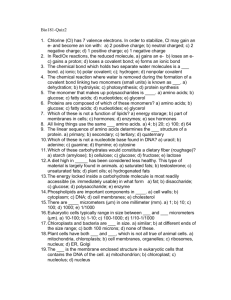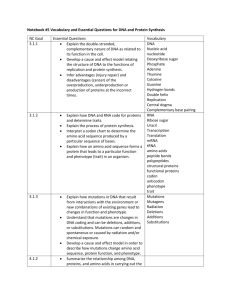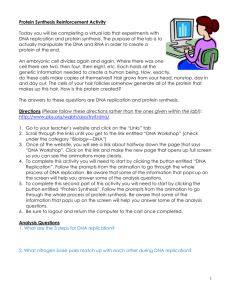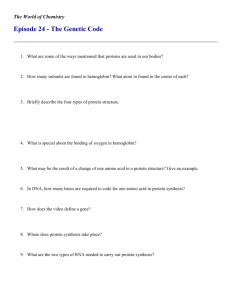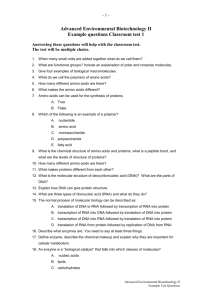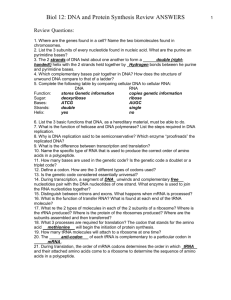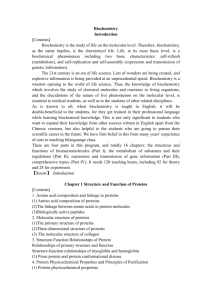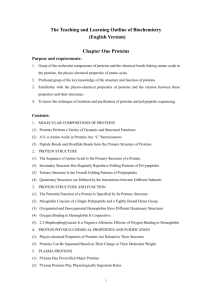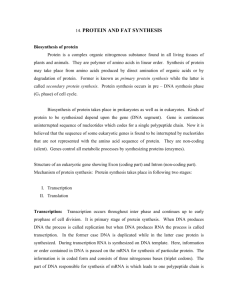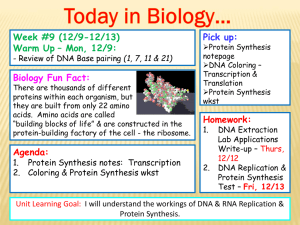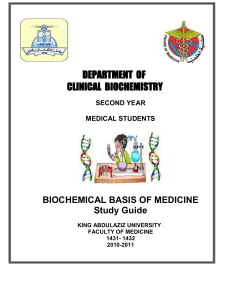Level 2 Biology - No Brain Too Small
advertisement
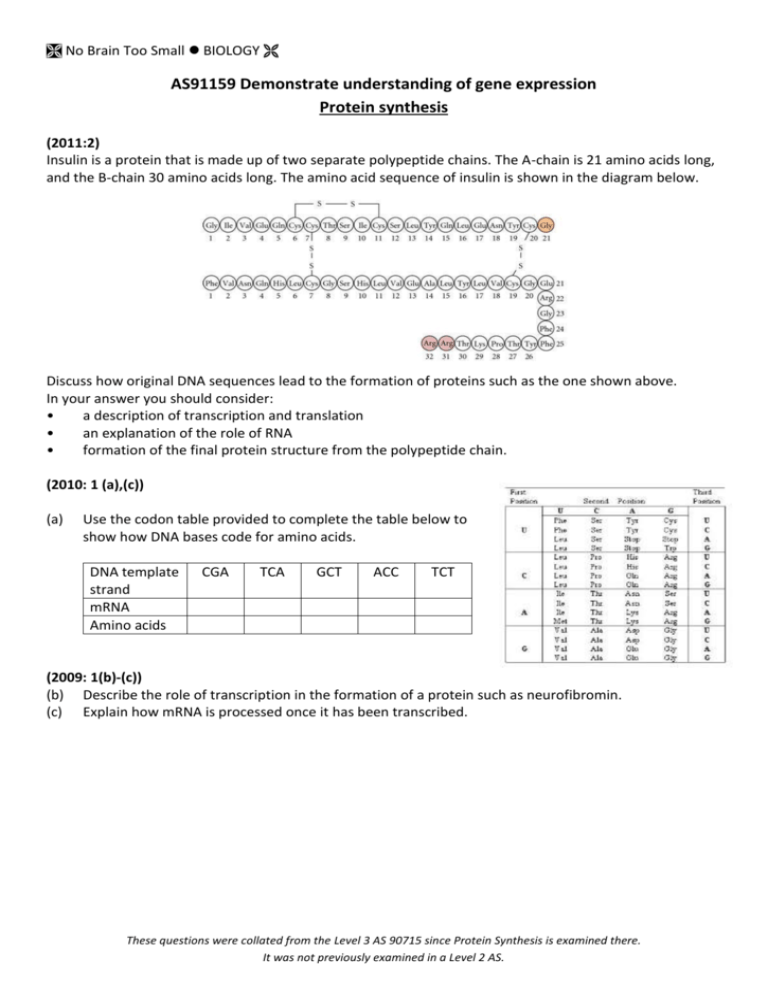
No Brain Too Small BIOLOGY AS91159 Demonstrate understanding of gene expression Protein synthesis (2011:2) Insulin is a protein that is made up of two separate polypeptide chains. The A-chain is 21 amino acids long, and the B-chain 30 amino acids long. The amino acid sequence of insulin is shown in the diagram below. Discuss how original DNA sequences lead to the formation of proteins such as the one shown above. In your answer you should consider: • a description of transcription and translation • an explanation of the role of RNA • formation of the final protein structure from the polypeptide chain. (2010: 1 (a),(c)) (a) Use the codon table provided to complete the table below to show how DNA bases code for amino acids. DNA template strand mRNA Amino acids CGA TCA GCT ACC TCT (2009: 1(b)-(c)) (b) Describe the role of transcription in the formation of a protein such as neurofibromin. (c) Explain how mRNA is processed once it has been transcribed. These questions were collated from the Level 3 AS 90715 since Protein Synthesis is examined there. It was not previously examined in a Level 2 AS. No Brain Too Small BIOLOGY (2008:1) DNA and RNA are two types of nucleic acid. (a) Complete the following table by giving the features of these two molecules. DNA RNA Bases present Relative length Sugar Location in eukaryote cell (b) Discuss how the arrangement of bases in the DNA molecule allows it to carry genetic information. Your answer should include information on the significance of: • sequence of bases on the DNA • nature of the code (codons) • redundancy of the genetic code. (2007:1(c)) The information carried by DNA controls protein synthesis. Protein synthesis includes transcription and translation. (c) Discuss the reasons why both transcription and translation are necessary for protein synthesis. (2006:2) Deoxyribonucleic acid (DNA) is found in almost all cells, and carries the genetic code that controls many aspects of cellular structure and function. (a) Explain how the DNA molecule carries genetic information. (b) Compare and contrast the processes of transcription and translation. These questions were collated from the Level 3 AS 90715 since Protein Synthesis is examined there. It was not previously examined in a Level 2 AS.





